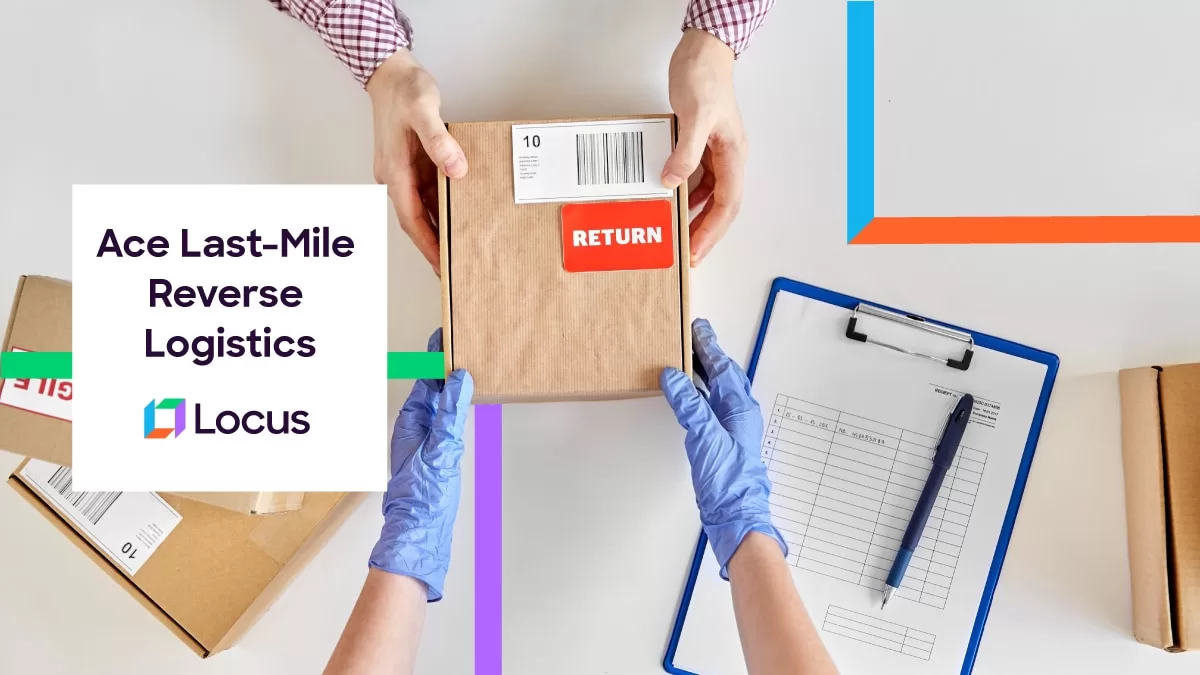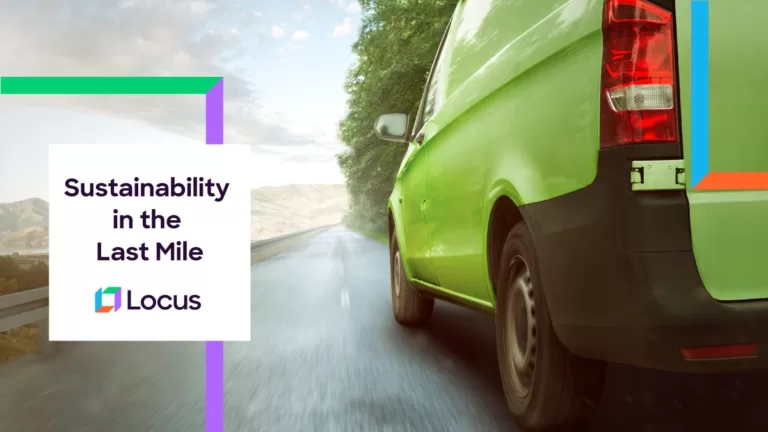General
5 Ways To Ace Last-Mile Reverse Logistics
Oct 17, 2022
7 mins read

“Tsunami of returns” is the new expression for what has been happening in logistics the past few years. It might seem like an overstatement but we have numbers to prove it.
In 2020, the total returns in the US accounted for $428 billion in lost sales, which was a whopping $761 billion in 2021. There was a 178% jump in merchandise returned between 2020 and 2021. There was another exciting aspect apart from this colossal increase in returns. The total returns in terms of lost sales in 2021 were larger than the US federal government’s national defense spending in 2020.
The e-commerce boom in recent years has caused a tremendous rise in returns. We live in an age where product returns have become inevitable for businesses. A last-mile reverse logistics plan has become essential for providing a superior and delightful customer experience. It’s time to learn about the other half of the last-mile delivery—reverse logistics. Let’s jump in!
What is last-mile reverse logistics?
Last-mile reverse logistics is the process of moving goods from the final destination (customers) to their source (fulfillment center or warehouse). It is a logistics process that takes place after a product gets delivered to a customer. It involves planning, scheduling, and managing the returns of orders for a specific time and bringing them back to the warehouse.
Want to know more about the history and evolution of reverse logistics?
How to ace last-mile reverse logistics?

The need for reverse logistics processes to be seamless is growing. It is just as, if not more important than the product delivery service. Businesses are realizing that the customer’s doorstep isn’t always the product’s final destination.
Last-mile reverse logistics determine the post-purchase customer experience and brand loyalty. To win customers’ trust and drive high revenues from the final mile, businesses should smoothly and seamlessly manage reverse logistics. Here are the five ways to ace your last-mile reverse logistics:
- Add return stops to a planned delivery route
Imagine you are a laundry service business and your trucks deliver orders from point A (laundry shop) to point B (customer doorstep). When it returns to point A with an empty truckload, we call this empty or deadhead miles in logistics.
Empty miles don’t generate any revenue for your delivery business. A survey in 2021 mentioned that of the distance traveled by all carriers in the US, 20.6 miles were deadhead miles. So, how do you take orders back to the sorting center without incurring extra costs to the logistics service provider or retailer?
The answer to this question lies with adding return stops to the planned delivery route. Adding return stops to the delivery route on a single tour can increase drop density, route efficiency, and profitability. This simplifies the handling of return exception tasks for the drivers and dispatchers. Overall, it ensures that orders are returned to warehouses or fulfillment centers without additional logistics costs.
Want to schedule your return stops efficiently?
- Monitor failed delivery attempts
A failed delivery attempt is the most crucial metric that drives the reverse logistics workflow. When a delivery attempt fails, a driver should have a system to upload the delivery information.
A driver companion app lets your drivers quickly upload the details of failed delivery attempts. It helps you club the orders in the driver’s current delivery tour or accommodate a second delivery attempt on another time window. It also ensures that the reverse process of the orders is quicker and safer.
- Leverage data insights
- How much is the cost to dispatch orders from the sorting center to the customer’s doorstep?
- What is the cost-per-mile to pick up customer orders and return them to the sorting center?
- Which delivery zone has the most returns, and what are its reasons?
- Is there an increase in failed deliveries and missed deliveries?
- Are the on-time delivery rates falling?
- What are the products that attract the highest number of returns?
You may encounter questions like these when scheduling pickups for reverse logistics. Reverse logistics in the last mile is an expensive and complex process that requires data-driven decisions.
Say that the holiday season is approaching, and you must plan your fleet needs before it begins. By obtaining insights on reattempted deliveries during your previous holiday seasons, you can forecast the fleet requirements for the upcoming holiday season and prepare for it.
With advanced analytical insights from fleet tracking software, you can identify the patterns and trends leading to returns and rectify them. By leveraging data, you can easily determine if your current reverse logistics plans and strategies are working. Also, it enables you to build a flexible, quick, safe, and cost-efficient reverse logistics strategy for upcoming deliveries.
- Optimizing vehicle capacity usage

How do you make sure that the vehicle space is optimally used for reverse logistics? This question is tied to businesses’ biggest problem in forward and reverse logistics of the final mile —Capacitated Vehicle Routing Problem with Time Windows (CVRP).
When you deal with thousands of order returns in a day, it is challenging to plan optimal routes, fulfill on-time pickups, and make full use of vehicle space.
We can solve the vehicle routing problem by factoring the size and weight of the products picked up, and matching them against individual vehicle capacities. As you optimize vehicle capacity usage, you minimize the need for drivers to make multiple trips, thereby cutting down fuel costs.
The CVRP problem for businesses that handle multiple fleet capabilities is quite different. Imagine you are a business that has two hundred vehicles, one hundred serving grocery deliveries, and another hundred serving pharmacy deliveries. There may be days when grocery returns may be higher than pharmaceutical returns.
During these circumstances, you would require an additional fifty vehicles to handle reverse logistics for groceries. But how do you manage this situation? The answer lies in cross-fleet utilization.
Cross-fleet utilization combines the fleet used for both grocery and pharmaceutical deliveries. By combining both fleet capacities, you can use the maximum space to handle pickups of groceries. It adds more capacity, increases the number of stops a driver makes in a single shift, and improves fleet utilization.
- Invest in the automation and digitization
With traditional logistics flows, businesses cannot handle massive quantities of goods as returns.
Businesses can build an efficient reverse logistics plan by digitizing and automating the return processes. It allows you to assign driver pickups based on the right skill sets, proximity, availability, and vehicle capacity. It helps you effectively resolve conflicts that arise in returns processing and refunds.
Optimize last-mile reverse logistics with Locus
Reverse logistics is a critical component of the last-mile delivery that determines the on-ground workforce efficiency. Even though it is a highly complex and expensive process, a few proper steps like the ones discussed above can produce exceptional results for your business. You can attain a competitive edge in reverse logistics by investing in technologies like dispatch management software.
With its advanced machine learning algorithms, Locus’ dispatch management platform helps your businesses to manage daily pickup and drop schedules. It generates optimal reverse logistics plans based on real-world constraints like time windows, vehicle capacity, driver skills, etc. Its intelligent carrier recommendation and proof of pickup checklists help you assign customized fleets for pickups and resolve conflicts arising in returns processing.
Want to maximize the efficiency of your on-ground staff in forward and reverse logistics?
Sources
https://cdn.nrf.com/sites/default/files/2022-01/Customer%20Returns%20in%20the%20Retail%20Industry%202021.pdf
https://9d4f6e00179f3c3b57f1-4eec5353d4ae74185076baef01cb1fa1.ssl.cf5.rackcdn.com/Customer%20Returns%20in%20the%20Retail%20Industry%20-%20short%20pdf.pdf
https://truckingresearch.org/wp-content/uploads/2021/11/ATRI-Operational-Cost-of-Trucking-2021-FINAL.pdf
Related Tags:

Sustainability
Go Green or Go Home: Why Sustainability in the Last Mile is Crucial for Your Business
Adopting logistic solutions can bring sustainable last-mile into your businesses and can encourage those on the ground to carry out sustainable practices.
Read more
Retail & CPG
Revenge Festivities: How To Power Up Your Retail Last-Mile Fulfillment To Meet Soaring Demand
Optimizing last-mile operations builds a resilient supply chain for your retail business and can deliver exceptional customer experiences during festive season.
Read moreMOST POPULAR
EDITOR’S PICKS
SUBSCRIBE TO OUR NEWSLETTER
Stay up to date with the latest marketing, sales, and service tips and news


5 Ways To Ace Last-Mile Reverse Logistics